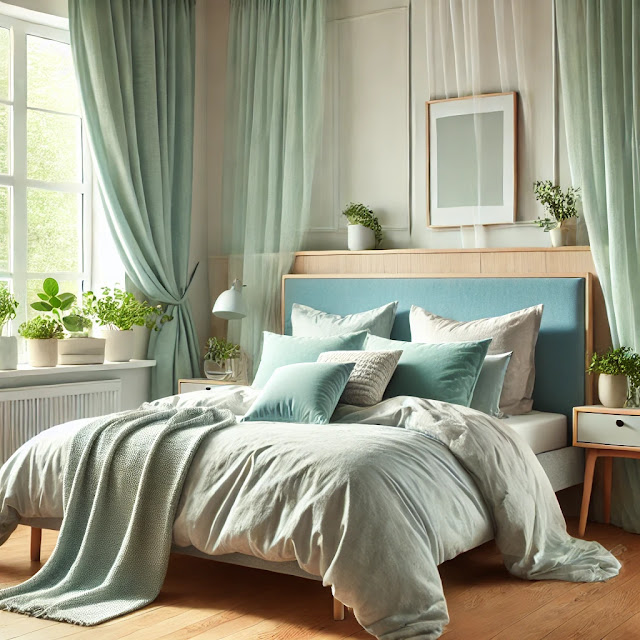How to Create a Calm and Relaxing Room
How to Create a Calm and Relaxing Room: Make Over Your Environment:
Tips to Turning Your Home into a Sanctuary Today, people can hardly find the time to organize their day let alone free time to relax or find some peace and quiet in their home. This may be a bedroom, living room or home office; all these will benefit from this kind of environment as it assesses your well being. Below are quite good but easy-to-implement tips that will help you create a soothing environment in any zone of your home.
1. Choose Soothing Colors
It is a well established fact that colors do influence our feelings. Subtle, non-aggressively warm shades mostly in
3. Embrace Natural Elements
Making use of natural materials within the home can help retain we calmer state of mind. Bring raw natural type of furniture like wooden designs, stone engraving or clay pots. It is also possible to incorporate hardy foliage as a means of bringing the outside indoors, as well as air purification. Any low light plants such as the peace lilies, snake plants or lavender are good for creating a relaxing environment.
4. Soft Lighting
Lighting can also be used to set the right mood of the entire occasion appropriately. No bright fluorescent lights, it makes people look horrible, use only warm and soft lights. Floor lamps or table lamps, wall mounted lamps or string lights bring a warm light, which does not flood the space. You might also consider using LED lights which are touch dimmable and allow one to switch between high and low intensity depending on the day and the time.
5. Use Comfortable Textures
Bring textures that make you want to find a comfortable position to lay down such as blankets, rugs or linen curtains. Padding is a good thing as more layer of comfortable material can add to the feeling of welcome in the room. You might like the idea of incorporating another texture on the sofa such as a fur throw or a texture on the bed like a woven blanket. It may sound obvious but these little touches really can make all the difference when it comes to getting some rest and relaxation.
6. Add Calming Scents
With scents, there can be easily aroused a sense of homely comfort. Earl grey, peppermint, lemongrass, and rosemary are stimulating but lavender, chamomile, eucalyptus, sandalwood are most effective for relaxation. For fragrance, you could spray the essential oil on a diffuser, light up some scented candles or put dried lavender in a bowl. The smell can quickly alter the atmosphere and make the room comfortable again, or even a restful space.
7. Choose Minimalist Decor
Choose simple furniture and accessories that you do not overstuff the room. There are no complex artistic arrangements on the walls; the few items selected will not cause the room to be overly decorated; natural items used as decorations will ensure that the room remains calm. Just don’t go overboard on the brightness or the patterns, as it can tend to be confusing rather quickly. The idea is to have things blend in perfectly without having to over power the elements of sight.
8. Create a Tech-Free Zone
Having a room with no electronic technology can really help in making the atmosphere very much relaxing. There’s nothing wrong with the use of electronics per se, so establish clear rules as to where and when they should be used, especially at night and in sleeping/ relaxing spaces like the bedrooms. You might put in a small bookshelf or a little sitting area or a meditation corner, making the room a ‘no work zone’.
9. Incorporate Personal Comforts
Take Off Room enhancements that bring familiarity such as pictures, small mementos or toys/ books that children like. All these little items foster a sense of ownership and happiness but make the space stand out and uniquely yours. Some students may like to bring many personal items to the room and this must not be allowed most especially when the room is shared by several students, this is because some of the items are only attractive for a short period of time and they only create confusion in the room and thirdly, students should be free to bring few personal items to the room like a couple of photos and poster.
10. Keep Air Flowing
As with any room, a good number of windows should give an open feel to the room. For any opportunity, open windows, doors, curtains, or blinds to allow ventilation in the house and to allow sunlight inside the house. An example of this is when windows are few, a fan or an air purifier purifies the floor, helping in the circulation of air and making the whole room friendly.
Final Thoughts
Designing a calm room means minimalism, comfort, and symmetry. Colors, texture, fragrances and ornaments can be carefully selected among others to enable one to create comfort and peaceful atmosphere even in the most cramped corner. Tiny changes make a huge difference, ensuring you are free to rejuvenate every time you set foot on the place.






.png)
.png)
.png)
.png)
.png)
.png)





0 Comments